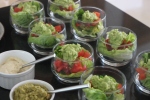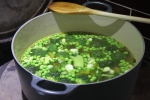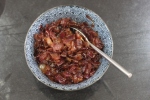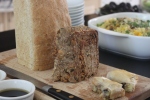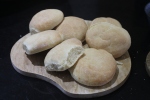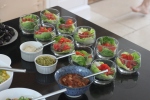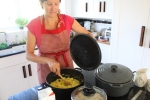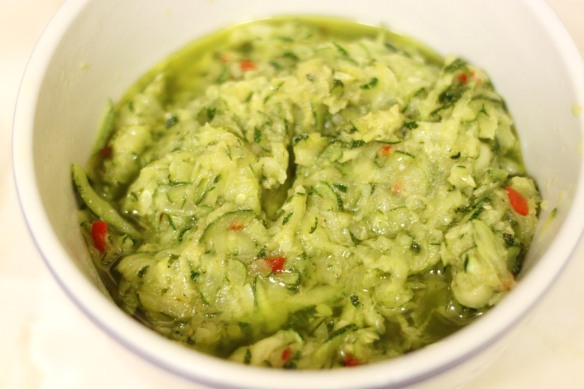
Eat these little patties hot or cold; totally delicious served with dairy-free yogurt and sweet chilli sauce/or chilli and garlic sauce. Once you’ve made the chapatis you’ll never bother buying ready-made naan or Indian breads from a shop again. They are quick, simple and very tasty.
Spicy Chickpea and Cauliflower Patties
Makes 6-8 small patties, serving 2-4 people
Preparation/cooking time 30 minutes
1 tin chickpeas, drained
1/2 head cauliflower, broken into florets
2 tbsp sunflower or vegetable oil
1 small onion, finely chopped
1-2 medium-sized red chillies, finely chopped
1 cm cube of ginger, finely chopped
1 clove garlic, crushed
1 tbsp cumin seeds
1/2 tsp turmeric
1/2 tsp asafoetida
1/4 tsp cayenne pepper
1 tbsp lemon juice
Salt and pepper to taste
2 tbsp gram flour
2 tbsp plain flour
2 tbsp sunflower or vegetable oil to fry patties
1. Bring the cauliflower florets to boil in a medium saucepan of salted water. Turn the heat down and allow to look for around 5 minutes, until soft, then drain.
2. Meanwhile, see how soft your chickpeas are from the tin. If they are slightly hard or small, boil them for 15-20 minutes to soften them up. One should be squashed easily under a fork.
3. In a frying pan, heat the oil then fry the onion, garlic and ginger for a couple of minutes, before adding the rest of the ingredients, apart from the flours and the second lot of oil. Don’t have the heat too high, or the spices will burn. Allow the ingredients to soften and brown lightly, before removing from the heat.
4. Place the chickpeas and cauliflower in a medium-sized mixing bowl, before adding in the onion and spice mix.
5. Mash all the ingredients together thoroughly using a potato masher. Stir in the flour to bring the mixture together to form a dough, which can be divided into 6-8 pieces and shaped into small patties.
6. If the patties aren’t sticking together very well, sprinkle in a teaspoon more of either flour and mix again.
7. Shape all your patties, then fry them on a medium heat in the oil, turning until they are golden on both sides.
8. Either allow to cool or keep warm in a pre-heated oven while you make the chapatis.
Spring Onion Chapatis
Makes 2 large or 4 small chapatis
Preparation/cooking time 10 minutes
1 1/4 cups plain flour or chapati flour
1/2 cup water
3 spring onions, finely chopped
Salt and pepper
2 tbsp sunflower or vegetable oil
1. Mix flour, water and spring onions together in a mixing bowl with a wooden spoon to form a dough.
2. Roll out the dough into one long ‘sausage’ on a floured worktop and divide into 2 or 4 pieces. Roll each piece into a circle with your hands, then flatten into chapatis (around 3mm thick) using a floured rolling-pin.
3. Heat the oil in a saucepan to a fairly high heat, before adding in each chapati and cooking in turn. They will start to bubble slightly and brown quite quickly, so keep an eye on them and turn promptly. They will only take a couple of minutes each to cook.
4. Serve the patties with a chapati and a yogurt dip or homemade raita, and with sweet chilli or chilli and garlic sauce.
I selected this post to be featured on
Vegetarian Blogs. Please visit the site and vote for my blog!


